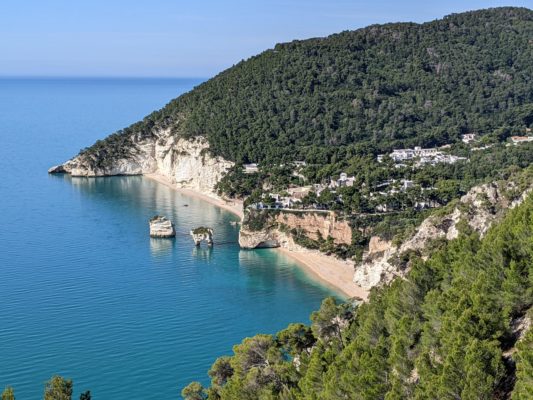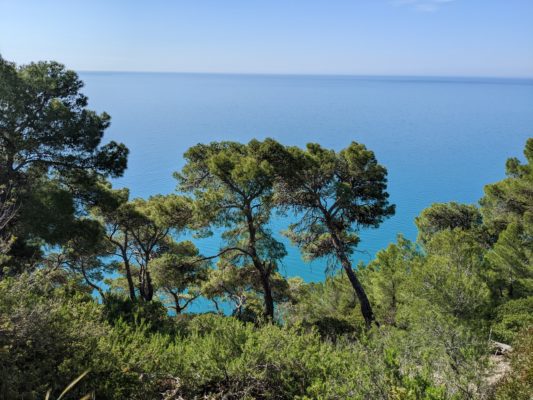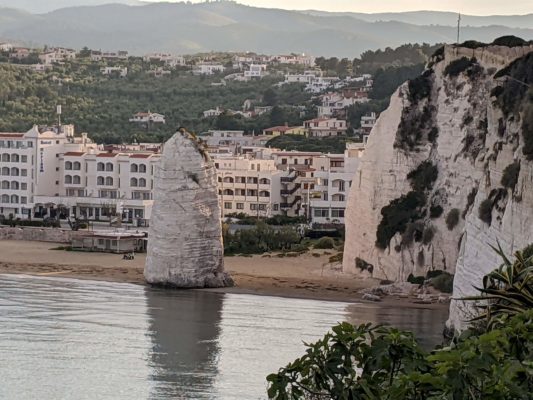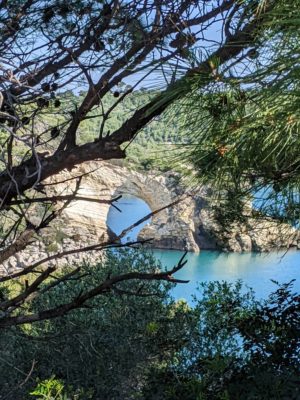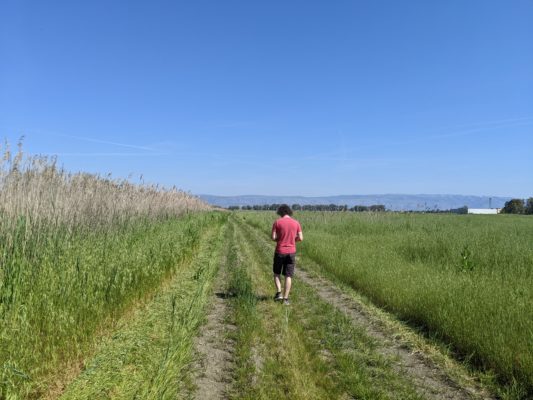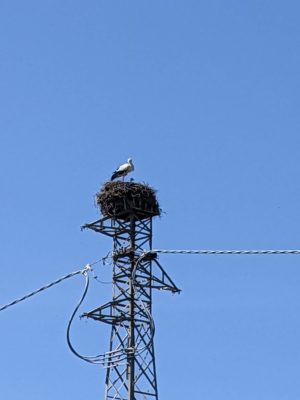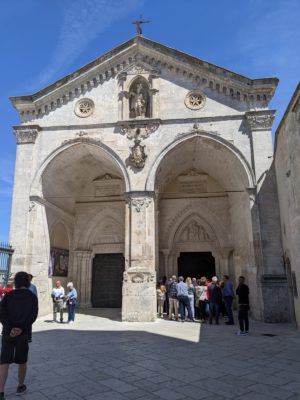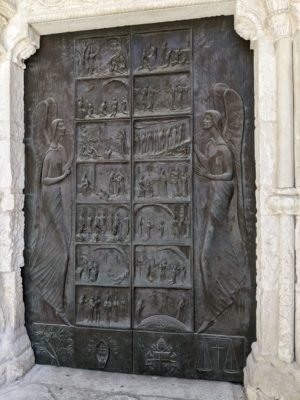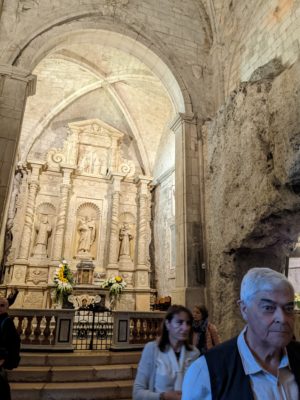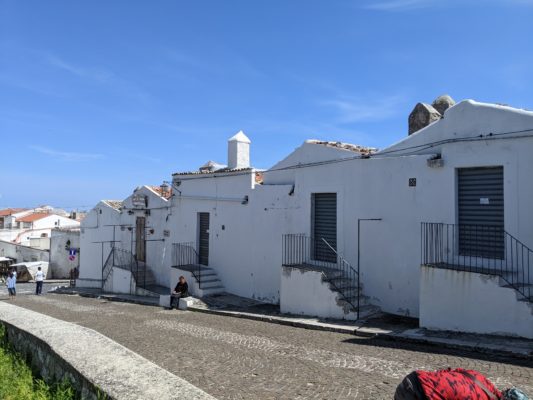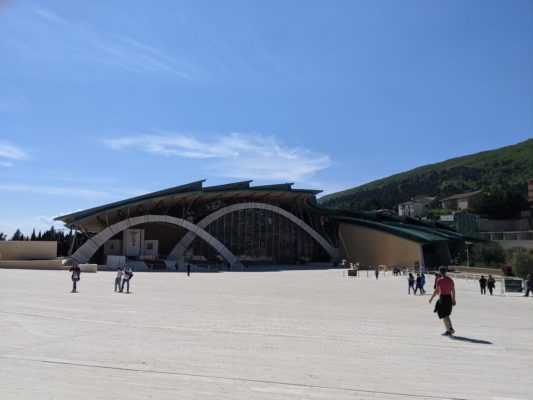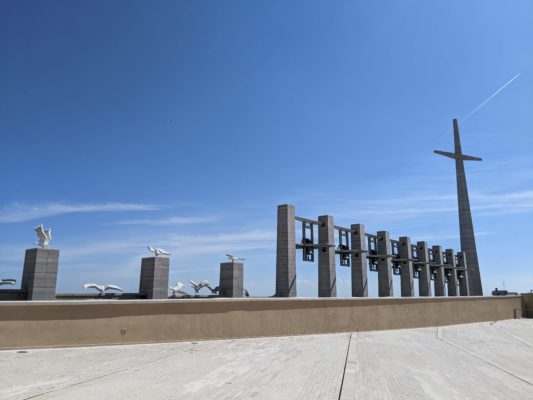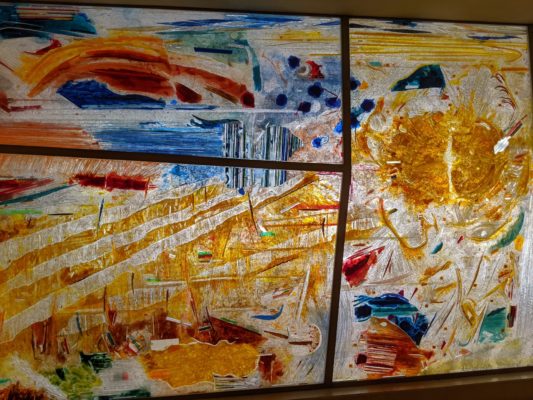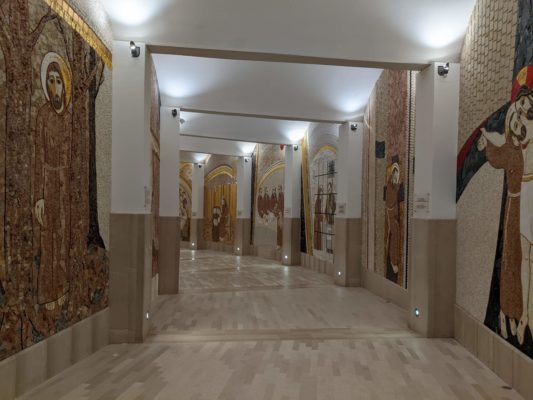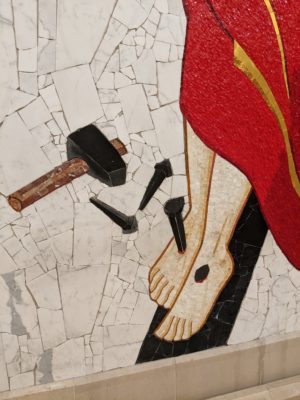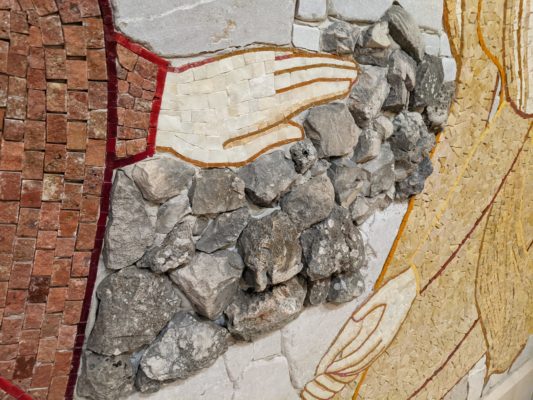On the way home from Gargano, we drove down the east coast of the peninsula. We found a hiking path just off of the highway, a path that took us along a mountain ridge with incredible views of the sea. We walked maybe a mile along this path and then turned around to go back to the car because we thought we would take another hike down at the sea.
The Gargano coast is beautiful with its white limestone cliffs and rock formations. The most famous are the Pizzomunno formation in Vieste and the arch just down the coast.
When we got to sea level, we couldn’t find the trail head. We walked and walked and realized we were traversing farmland and were nowhere near the trail.
But we did notice that every electrical tower had a built-in bird basket for a pelican nest.
We then traveled up into the mountains to visit two important pilgrimage churches. And when I say we went up into the mountains, WE WENT UP INTO THE MOUNTAINS. We went from sea level to 2,600 feet in 30 minutes, navigating 20 hairpin curves up up up. I think the Tour d’Italia bike race might have been going through here, because we saw lots of advertising banners on the fences and guardrails along the way.
Monte Sant-Angelo is famous for the cave where the Archangel Michael appeared three times in 490, 492, and 493. The cave has now been integrated as part of a Renaissance church. We visited in early May, and the town and church were already unbearable with tourists; I can’t imagine what it must be like in July and August. If you’ve ever been to the Sistine Chapel, it was like that – packed with people and the docents constantly saying “shhh”. However, it was very interesting from an architect’s perspective with the way the new church was built around the cave.

the cave where Archangel Michael appeared – now a pilgrimage site – and filled with tourists who were sitting down for Mass
Our next stop was San Giovanni Rotondo, another Catholic pilgrimage site. Padre Pio (1887-1968) was a capuchin monk at the convent in this town for 50 years, and he was known for his healing powers. He was canonized as a saint in 2002. To this day, you can see his image all over southern Italy.
Padre Pio’s original church is still open to the public.
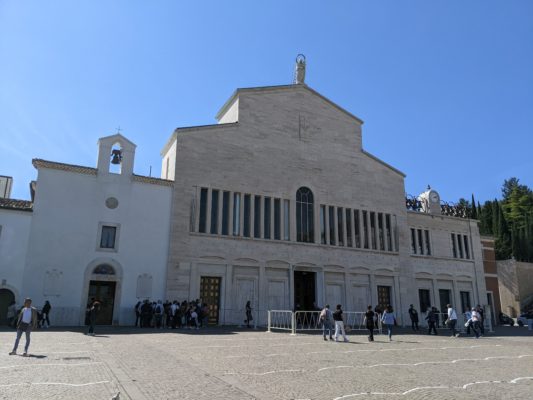
Padre Pio’s church – the original old church is on the left, the “new” church is on the right and looks like it was built in the 1930s, I need to do a little more research on this
However, it is the new-new church that drew me to the town. The new church was designed by world-famous architect Renzo Piano, and it opened in 2004. The church can seat 6,000 and can also accommodate 10,000 standing. That’s a lot of pilgrims!
The architecture is interesting, but the most beautiful parts are the stained-glass windows and the mosaics leading down into the crypt.
Perhaps the strangest part is the fact that Padre Pio’s body was exhumed in 2008 and is now on display in a glass box in the crypt. The faithful were lined up to view the body and pay their respects. Of course, I got in line as well, because, tradition. While all of the other (Catholic) people in line did the signs of the cross and the finger-kiss in front of Padre Pio, I just held my hands in prayer. And while many people took photos of his body, I did not do so because it seemed disrespectful. You can Google it if you want to see it.
And in Monte Sant’Angelo, we had a wonderful lunch and also bought some wine and snacks to bring home.
